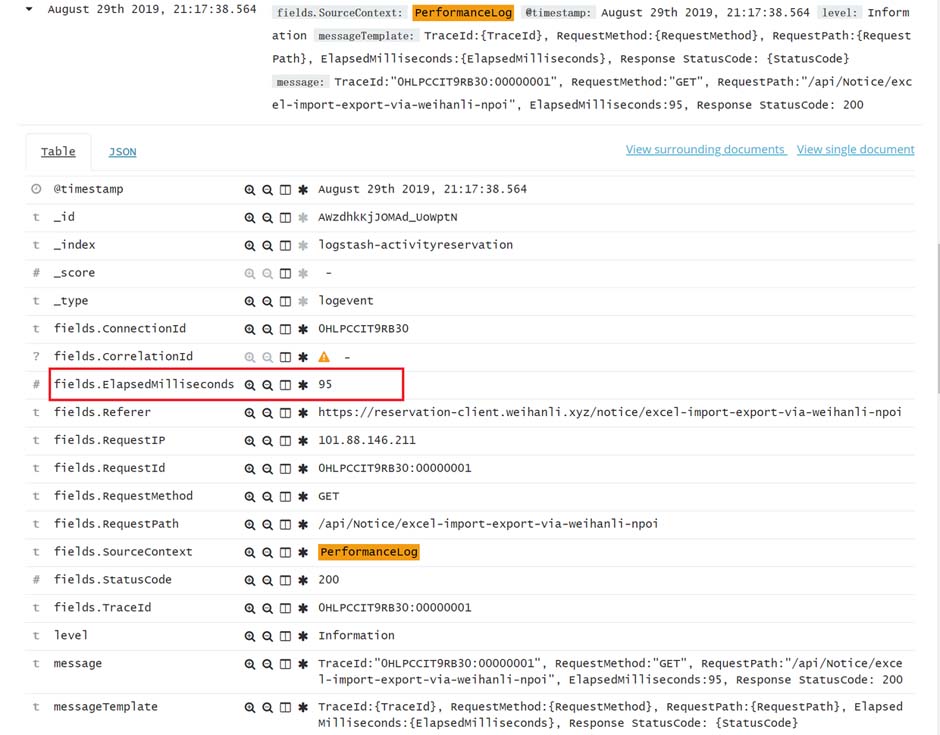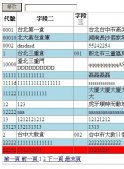Intro
寫接口的難免會遇到別人說接口比較慢,到底慢多少,一個接口服務器處理究竟花了多長時間,如果能有具體的數字來記錄每個接口耗時多少,別人再說接口慢的時候看一下接口耗時統計,如果幾毫秒就處理完了,對不起這鍋我不背。
中間件實現
asp.net core 的運行是一個又一個的中間件來完成的,因此我們只需要定義自己的中間件,記錄請求開始處理前的時間和處理結束后的時間,這里的中間件把請求的耗時輸出到日志里了,你也可以根據需要輸出到響應頭或其他地方。
|
1
2
3
4
5
6
7
8
9
10
11
12
13
14
15
16
17
18
19
|
public static class PerformanceLogExtension{ public static IApplicationBuilder UsePerformanceLog(this IApplicationBuilder applicationBuilder) { applicationBuilder.Use(async (context, next) => { var profiler = new StopwatchProfiler(); profiler.Start(); await next(); profiler.Stop(); var logger = context.RequestServices.GetService<ILoggerFactory>() .CreateLogger("PerformanceLog"); logger.LogInformation("TraceId:{TraceId}, RequestMethod:{RequestMethod}, RequestPath:{RequestPath}, ElapsedMilliseconds:{ElapsedMilliseconds}, Response StatusCode: {StatusCode}", context.TraceIdentifier, context.Request.Method, context.Request.Path, profiler.ElapsedMilliseconds, context.Response.StatusCode); }); return applicationBuilder; }} |
中間件配置
在 Startup 里配置請求處理管道,示例配置如下:
|
1
2
3
4
5
6
7
8
|
app.UsePerformanceLog();app.UseAuthentication();app.UseMvc(routes => { // ... });// ... |
示例
在日志里按 Logger 名稱 “PerformanceLog” 搜索日志,日志里的 ElapsedMilliseconds 就是對應接口的耗時時間,也可以按 ElapsedMilliseconds 范圍來搜索,比如篩選耗時時間大于 1s 的日志

Memo
這個中間件比較簡單,只是一個處理思路。
大型應用可以用比較專業的 APM 工具,最近比較火的 Skywalking 項目可以了解一下,支持 .NET Core, 詳細信息參考: https://github.com/SkyAPM/SkyAPM-dotnet
Reference
https://github.com/WeihanLi/ActivityReservation
總結
以上就是這篇文章的全部內容了,希望本文的內容對大家的學習或者工作具有一定的參考學習價值,謝謝大家對服務器之家的支持。
原文鏈接:https://www.cnblogs.com/weihanli/p/record-aspnetcore-api-elapsed-milliseconds-via-custom-middleware.html












